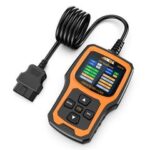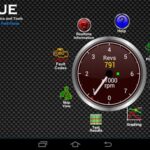For years, a persistent myth has circulated within the BMW E36 community, particularly amongst those undertaking engine swaps: that reverting to OBD1 (On-Board Diagnostics I) when installing an M52 or S52 engine is somehow advantageous. As a seasoned auto repair expert at carparteu.com, I’ve encountered this misconception countless times. Let’s set the record straight and delve into why sticking with E36 Obd2 is not just viable, but often the superior option for your engine swap project.
Debunking the OBD1 Dogma: Common Misconceptions Exposed
Many enthusiasts cling to the idea that OBD1 offers benefits in performance or simplicity. Let’s dismantle these arguments one by one:
The Power Myth: OBD1 Doesn’t Unlock Hidden Horses
A prevalent claim is that running your M52 or S52 engine on OBD1 somehow unleashes more horsepower. This is simply untrue. The engine’s inherent power output isn’t magically increased by switching to an older diagnostic system. Performance gains are achieved through tuning, component upgrades, and proper engine management, not by downgrading your ECU’s diagnostic capabilities.
Simplicity? Not Really: The Wiring Game Remains the Same
Another fallacy is that OBD1 wiring is inherently easier. In reality, the wiring complexity is largely dictated by the engine itself and the integration into the E36 chassis, not by the diagnostic system. Whether you opt for OBD1 or e36 OBD2, the fundamental wiring tasks for an engine swap remain comparable, especially if you’re engaging a professional for the wiring work. The level of effort required to integrate the engine management system is not significantly different between the two systems.
Manifold Myths: OBD2 and M50 Manifolds Play Nicely
The notion that OBD2 restricts you from using desirable components like the M50 manifold is also false. You absolutely can run an M50 manifold with e36 OBD2. Manifold choice is independent of the diagnostic system; it’s a matter of intake and engine performance considerations, not OBD compatibility.
EWS? Easily Erased: OBD2 Immobilizer is Not an Obstacle
The Electronic Immobilizer System (EWS) is often cited as a headache with OBD2. However, modern tuning and ECU flashing techniques easily circumvent this. EWS can be readily flashed out of the e36 OBD2 ECU, eliminating any perceived complexity or hurdle. This process is now a standard procedure in the tuning world and is no more difficult than dealing with other aspects of engine management.
Tuning Flexibility: OBD2 Catches Up and Surpasses OBD1
In the past, OBD1 might have been perceived as having a tuning advantage. This is no longer the case. Custom tuning options are just as readily available and sophisticated for e36 OBD2 as they are for OBD1. Furthermore, OBD2 ECUs often offer more granular control and finer tuning capabilities due to their more advanced architecture.
Emissions Equipment? Flash it Away: OBD2 Doesn’t Force Unwanted Systems
Concerns about secondary air pumps and evaporative emission (EVAP) systems being mandatory with OBD2 are also unfounded. Just like EWS, these systems can be easily flashed out of the ECU if they are not desired or needed for your specific setup. Modern engine management software provides full control over these parameters within the e36 OBD2 system.
The Undeniable Advantages of Embracing E36 OBD2
Now that we’ve dispelled the myths surrounding OBD1, let’s illuminate the clear benefits of retaining e36 OBD2 for your M52 or S52 swap:
Harness the Value: Reuse Existing Components
One of the most practical advantages is the ability to reuse the sensors, wiring harness, and ECU that likely accompanied your engine. This can represent a significant cost saving and simplifies the installation process. Why discard perfectly functional, compatible components when you can seamlessly integrate them into your E36?
Smarter ECU, Smarter Diagnostics: Pinpointing Problems with Precision
E36 OBD2 ECUs are demonstrably more intelligent and sophisticated than their OBD1 predecessors. This translates to superior diagnostic capabilities. An OBD2 system excels at identifying and reporting even minor issues, empowering you to troubleshoot problems far more effectively. This advanced diagnostic feedback is invaluable for maintaining engine health and performance.
Live Data at Your Fingertips: Real-Time Insights into Engine Performance
The ability to pull live engine data is a game-changer. With e36 OBD2, you gain access to a wealth of real-time information, including diagnostic trouble codes (DTCs), engine temperature, vehicle speed signal, and crucial fuel trim data like short and long-term O2 adaptations. This live data stream is invaluable for monitoring engine performance, diagnosing issues proactively, and ensuring optimal operation. This level of data access is simply not available with OBD1 systems.
Enhanced Engine Management: Cleaner Running, Optimized Performance
The smarter ECU inherent in e36 OBD2 contributes to a generally better and cleaner running engine. The more refined engine management system allows for more precise fuel and ignition control, resulting in improved fuel efficiency, reduced emissions, and potentially even a slight increase in power due to optimized engine operation. While not a dramatic horsepower boost, this optimized engine management contributes to overall performance and longevity.
Ditch the OBD1 Nostalgia: Embrace the Modern Advantages of OBD2
For those embarking on an M52 or S52 engine swap into an E36, the choice is clear. The outdated arguments for OBD1 simply don’t hold water in the face of modern technology and the demonstrable advantages of e36 OBD2. My own shop car, running an OBD2 M52, stands as a testament to the system’s reliability and diagnostic prowess. When a faulty cam sensor and coil pack cropped up, the OBD2 system immediately flagged the issues, allowing for swift and targeted repairs. In contrast, OBD1 systems often remain stubbornly silent, leaving you to blindly replace parts in a frustrating and inefficient troubleshooting process.
So, to all E36 enthusiasts contemplating an engine swap, resist the allure of outdated myths. Embrace the intelligence, diagnostic power, and modern capabilities of e36 OBD2. You’ll benefit from easier troubleshooting, better engine management, and a more streamlined and ultimately more rewarding engine swap experience.

